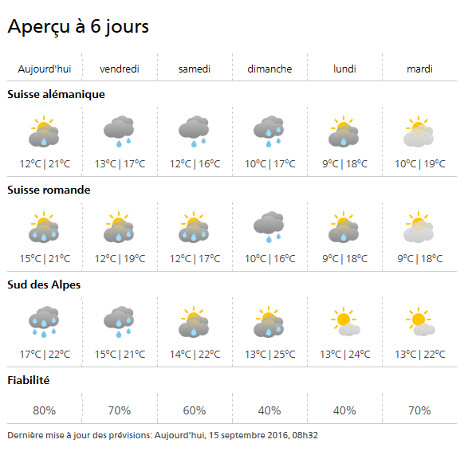The average temperature across the country from September 1st-14th was 19.8 degrees, Meteo Suisse said on Wednesday.
That’s the second hottest average for this time of year since records began in 1864, and is only surpassed by September 1911’s sunny September, when the mercury averaged 20.1 degrees in the first fortnight.
And some parts of the country experienced record heat so far this month, with Ticino averaging 23 degrees, significantly above the next highest comparable figure, of 21.6 degrees, recorded in the first half of September 1895.
The canton of Valais also broke records with an average temperature of 20.8 degrees. The last time the first two weeks of September averaged above 20 degrees in the Valais was in 1911.
Unfortunately, it looks like 2016 may be copying 1911 in more ways than one.
According to Meteo Suisse, a meteorological text written in 1911 says that “September was divided into two periods with completely different meteorological conditions: the first fortnight was very hot, practically without rain and very sunny, while the second fortnight was fresher, cloudy and fairly rainy.”
The meteorological conditions of 1911 – blamed on an anticyclone climate in Europe – seem to be repeating themselves this year, said Meteo Suisse.
Indeed, Thursday sees a significant change in the weather, with rain forecast for much of the country, continuing over the next few days.





 Please whitelist us to continue reading.
Please whitelist us to continue reading.
Member comments